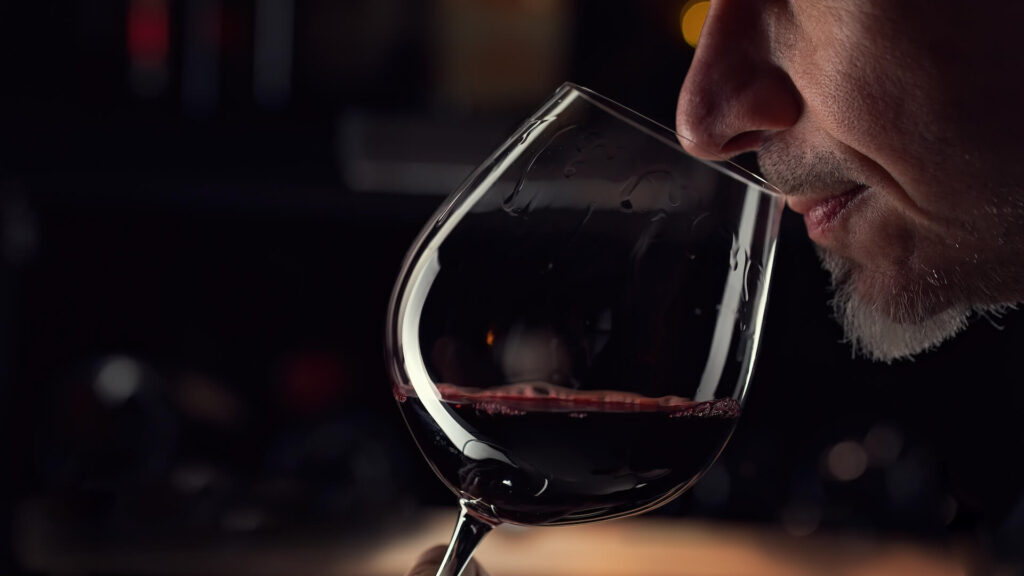Learning how to taste wine can help you appreciate different wine types and discover the flavors you’ll most enjoy. However, tasting wine isn’t the same as drinking a glass for pleasure. It’s a methodical process that uses all the senses to closely examine what the wine has to offer. Whether you’re a beginner to wine tasting or looking to refine your palate, learning the basics of wine tasting can help you hone your experience and enhance your enjoyment of wine. Follow our simple wine tasting tips to learn how to taste wine like a professional.
Tasting Wine: What to Know
Tasting wine is an activity that utilizes all your senses to appreciate all the nuances that make up the flavor of a fine glass of wine. A common beginner’s approach to wine tasting highlights the “five S’s” to promote core steps. The five S’s of wine tasting are see, swirl, sniff, sip, and savor. Here, we’ll explore that concept with a little more depth to help you understand what to evaluate.
The most accurate wine-tasting experience is conducted in an environment that won’t affect your perception. Avoid an area with strong smells (such as cooking or perfumes), ensure you have adequate lighting, and make sure your wine is at the correct temperature (7-10C for white wines and rosé, and 12-18C for red). When you pour the wine, avoid filling the glass. You want to leave room to swirl the wine in the glass and examine it properly.
Appearance
Look at the wine from multiple angles to see the complete color range and clarity. Begin by looking straight down into the glass to see the complete color range. Next, you’ll lift the glass to view the wine through the side to see how clear it is. Examine the wine again from the top of the glass while tilting and swirling so the wine thins out toward the rim to get an in-depth perception of what the color and texture can tell you.
What can you learn from this process?
- The depth of the color from a straight view indicates the saturation of the wine. Deeper colors can indicate aging or riper grapes.
- The clarity of the wine from a side view shares information about fermentation and filtration. Murky wines might have chemical or termination problems or be unfiltered.
- A wine that clings to the glass and runs down the sides when swirled has “legs,” which typically indicate a higher alcohol or sugar content.
- As wine thins toward the rim, an orange/brown color indicates age, while a vivid purple is more likely to be a young wine.
Smell
Smelling a wine properly will help you identify key fragrances that share more information about the wine’s flavor. Swirl the wine, then hover over the top of the glass to take a series of short quick sniffs. Move the glass away from your nose to evaluate the aroma for flaws and ingredients.
- Unpleasant smells like vinegar or mold suggest flaws that can detract from the taste of the wine.
- Separating fruit smells can tell you more about the age of the wine, sugar content, and even the climate grapes were grown. Rich, jam-like smells can indicate fruit from a warm climate. Fruit that smells cooked instead of fresh can indicate age.
- Spice aromas yield more clues about how the wine was made and its age. Older reds may have scents reminiscent of tobacco while older whites have a toasty smell. Scents of vanilla and coconut can indicate a wine that has been aged in oak barrels.
Taste
After gleaning all the information you can from the appearance and smell of the wine, it’s time for the big finale. Take a small sip from the glass and hold it in your mouth. Swirl it around a little before swallowing. When tasting, consider the thickness of the wine, sweetness of flavor, bitterness, acidity, and whether you experience a drying sensation.
What can you learn from the taste of a wine?
- Sweetness may suggest the wine was made from a late harvest.
- A harmonious flavor in which the individual components don’t stand out can indicate age.
- A drying sensation on your tongue or gumline shows the presence of strong tannins from grape skins and seeds.
- The amount of time the flavor lingers after swallowing shows the complexity of the wine’s flavors.
- Acidity can be a sign of grape variety or grapes grown in cooler climates.
Find Your Wine Online
A good wine usually strikes a balanced blend of flavors with an enjoyable intensity. The flavor lingers on the tongue for more than a few seconds. Whether sweeter, drier, or aged wines are best is a matter of preference, and you may find yours changes over time. Now that you know how to taste wine like an expert, it’s time to put your new knowledge into practice. Shop our online inventory to discover new flavors and expand your wine knowledge.
Image credit: StockLite via Shutterstock
Sources:
1. https://www.bbcgoodfood.com/howto/guide/how-to-taste-wine

